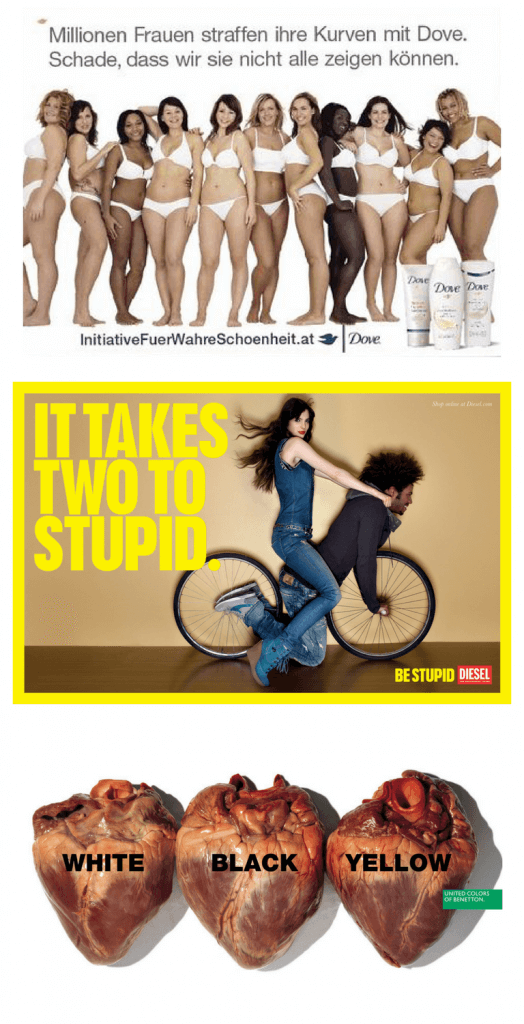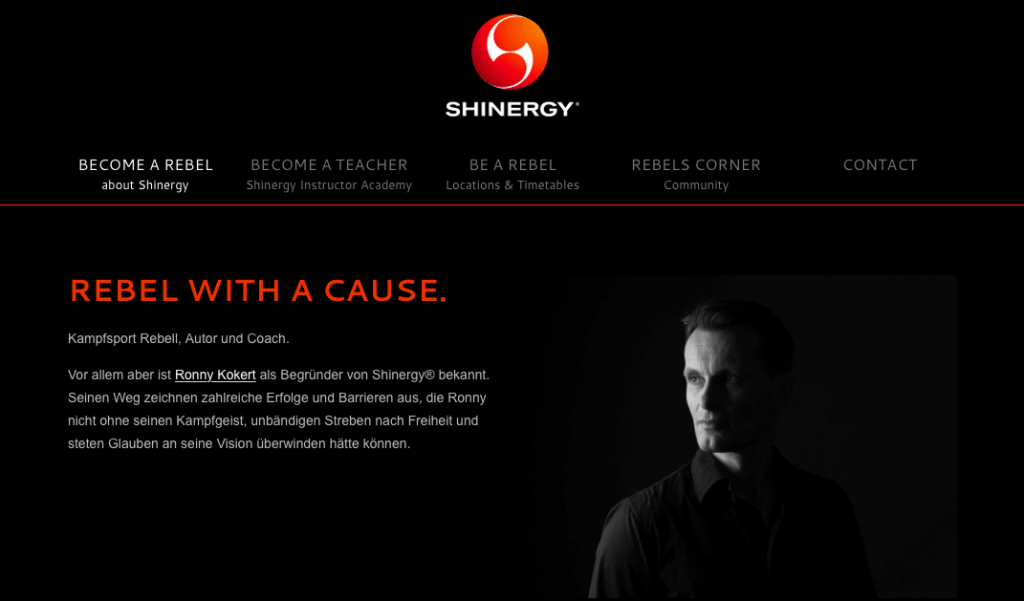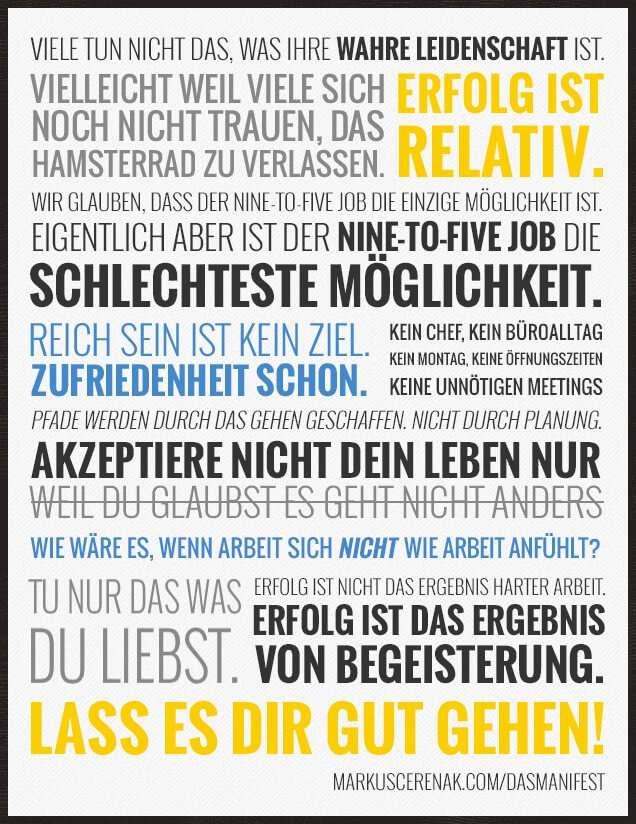Who knows if Tim Berners Lee could have dreamed how fundamentally our world would change when he pressed the Enter key on 6 August 1991 and put the first website in history online, thus launching the WorldWideWeb. But one thing he knew even then: "The web is more a social creation than a technical one. I designed it for a social effect - to help people work together - and not as a technical toy."
What has become daily reality through the WorldWideWeb at the latest, however, was already predicted by Obi Wan Kenobi in the distant future thanks to his infinite wisdom: "I felt a great disturbance in the Force ...". This disturbance in the Force affects almost all areas of life and us as marketing communicators and media people directly. Right into the gearbox.
In and through the WorldWideWeb, the cards have been reshuffled. Now the people are in control, at least in theory. Whether that is always a good thing is another matter, but the fact is that a many-voiced, boundless, always-on conversation is taking place that no company, no brand can influence or even control. And this is despite the fact that companies and brands are very often the subject of this conversation. But companies and brands can participate in these conversations and, in the best case, even inspire them. At best means: in the best case. In other words, open, pure of heart and without manipulative ulterior motives. No tricking, no cheating, no sneaking in helps.
The times they are a-changin'
Part of this change is that companies are often criticised. Mostly very direct and blunt, not always fair, more often effective. Let's not confuse this with hostility to business, enterprise or consumption. The opposite is the case. People are buying more than ever before, which is not too good news for that part of the brick-and-mortar trade that is having a hard time with this new world. In this case, it is best to adhere to the infinite wisdom of Nobel Prize winner Bob Dylan, the Obi Wan Kenobi of pop lyricism: "Then you better start swimmin' or you'll sink like a stone, for the times they are a-changin' ..."
A steadily increasing tempo, enormous simultaneity and a lost overview are side effects that the WWW has brought down on humanity. Powerful changes, but still only a first greeting from the kitchen, it seems. Along with other influences, this also contributes to an intensified human search for meaning and orientation that has been observable for many years. This search for meaning becomes visible in various phenomena, for which a lot of studies worth knowing about are on display at the relevant motif, trend and futurology researchers. This ranges from a growing interest in spirituality to the way we live together or how we will, want to and can work. And of course, the search for meaning and orientation is also reflected in what we buy.
I buy, therefore I am?
In our society, the so-called civilisation, we no longer define ourselves only by where we come from, which ethnic group, religion, social class or tribe we belong to, but also very often and more often than we realise, by what we buy. Or not. What we spend money on is what really interests us. Products, brands and lifestyles are signs of our own attitudes, i.e. our - self-chosen - status and thus a message to the world: this is me. And thus one more particle in the infinitely diverse questionnaire of our existence with the title: Who am I? Vegan nutrition as a status symbol: I can afford not to eat meat, you Kobe beef parvenus ...
It's not about your product anymore.
This sweet spot is the most powerful lever to move an effective, sustainable brand story. Provided you do it right. Right means first: open, pure of heart and without manipulative ulterior motives. This requires a change in attitude and a new respectful understanding of advertising in most companies. How do we advertise? Why do we advertise? What do we advertise for? And: What still advertises for us at all?
We have to understand that people care less and less, if at all, about the products, because they are ultimately interchangeable. This insight is certainly not suitable for inventors, manufacturers and product managers in companies to roll around on the floor and bite the carpet with happiness, but so what. What is crucial for success is the importance of brands and the relationship they form with their audience. The excellent quality of a product is taken for granted, any innovation imitated sooner rather than later. It is even said that every innovation is thought about in an average of 21 different places on earth at the same time.
Brands with Benefits create meaning.
To have meaning, to be relevant - that is the big goal for brands. This is the pivotal point for effective brand stories. Because only from relevance do relationships with Brands with Benefits develop that make a valuable contribution to people's search for meaning. A valuable contribution. - Values are the building blocks of meaning, values are the colour palette for our image of the world. Brands that paint together with their audience on their common world view naturally use the same colours for this, so that the audience feels: "I see your true colours and that's why I love you. So don't be afraid to let them show ...", to paraphrase Cindy Lauper.
Conflict is vital.
A story is always the development from an imbalance to a balance, i.e. it has a central conflict at its heart. These can be very different questions. How do we free ourselves from oppression? How do I win the heart of a person? How do I manage to eat healthy and environmentally friendly food? How do I become a doctor? How do I regain lost energy? How can I look better, dress attractively, win the Star Wars? Whether in fictional stories or in brand stories: it's about conflict. It's about - at least - one core value that dies unless we ... do something to save it.
The best trick of the trade of new thinking in marketing communication is to see your brand, the brand story and what you do for it from the perspective of a movement. What would you do if you didn't have a product or service in stock, but wanted to create a movement? This is how you can ignite enthusiasm and commitment. We humans want to belong to something that is bigger than us and that creates meaning. On a large and small scale. And even the small supermarket checkout employee, often abused as a cliché, wants to find meaning in her work. Just like the brain surgeon. Meaning means something different for everyone, yet the same for many.
The following seven considerations will help you to do this:
1. what value is in danger if we do not exist?
What value or longing do we stand for and fight for, what do we make possible? Where does our meaning lie? In the 1984 Apple campaign, freedom was in danger, saved by the Macintosh.
So what issue can we credibly and authentically make our heart's desire?
If the first thing you think of is a Good Cause, that's right in principle but not necessary. The range of topics is wide and includes the initiative for True Beauty by Dove, which is concerned with a realistic, self-confident image of women beyond embellished Photoshop girls , as well as a semi-serious rebellious Be Stupid postulate by Diesel in the initiative for successful living.

These examples show very well how different such topics can be. What is missing in these campaigns is the extension into real life with usable and useful content. Most of the time, it just remains a proclamation and does not lead to a real change, to tangible action, to a sustainable experience of the brand mission. Mantra-like, I refer at this point to the exemplary schoolbook example Always #likeagirl
3. who is our common opponent?
A common opponent creates a sense of belonging, strength and necessity. If other people also have the same goal, the security of social proof is created: I am right because others I consider relevant and credible also consider it right.
The common opponent that is important for the brand story is therefore very rarely your competition, but usually something quite immaterial. In the 1984 Apple campaignit was Big Brother in the shape of IBM/Microsoft/HP, in the Think Different campaign it was the Ungeist, which stood against the new, fresh, inspired, against the improving change of the world.
4 What is our common longing?
Jyn Erso says in Rogue One the significant sentence: "We have hope. Rebellions are built on hope!" The longing for change can only ever be nurtured by hope, because there are no facts about the future. Every leader therefore needs a good story to inspire that hope. Hope, they say, dies last. The opposite is true: hope lives first.
What is true for leaders of rebellions is equally true for brands, because brands promise their audience a positive change in their field. This will rarely be a rebellion, but nevertheless you should know the central hope of your brand story and make it an asset in your communication.
There are nevertheless some brands that make rebellion quite clearly the centre of their brand story. The cited Apple campaign in 1984 is one of them. Or the brand Shinergy, which I accompanied with my team some time ago on its development from a training concept to a love style brand with attitude with the mission Rebels with a Cause mission. The life story of Shinergy founderRonny Kokert is the origin of this project and an authentic and credible source for the brand story, which is deeply relevant to many people in their own lives. Rebels with a Cause is their common longing and at the same time their battle cry for positive change.
"Am I activating the common desire?" is the control question of all your ideas and actions, so that you stay On Strategy and don't die in well-intentioned beauty. If the common desire is not activated, then either the idea is good but not for your brand, or you need to improve it.
The phenomenon of "good idea, but off strategy" crops up again and again at Christmas, when brand managers apparently fall in love with the high emotionality of TV spot ideas and are dazzled by enormous click-through rates, but are so far removed from their brand story with their films that they can't even write the claim under the logo. Read more about this in this blog post.
How do we mobilise our inner strength?
Authenticity is the lifeblood of any serious brand story. Without authenticity, the result is at most a well-disguised advertising campaign on the sneak path into the wallet of end consumers. Authenticity begins in the company itself. Only what is already there can be activated. Genuine brand stories are not discovered, but found. Often you have to search for it for a very long time, sometimes you don't find the brand story, but the brand story finds you. This is a difficult process, it can take time, detours are unavoidable. But it is worth it!
Almost always, the discovery of the brand story triggers changes in the company. The team has to be committed to the common goal. Everyone in the team must first recognise the value of the brand story for themselves. Every employee must be able to directly experience the importance for herself.
When it comes to change, as we all know, we humans often feel instinctive resistance within us. Change, by its very nature, means uncertainty, and who wants that? Regardless of the size of your company and the industry in which you work, you can learn a lot from those who deal with nothing but change on a daily basis: personal coaches. One of the most high-profile and successful experts in the German-speaking world is my friend Markus Cerenak, who, among other things, leads a - what a coincidence - rebellion, namely the rebellion against the hamster wheel. I can highly recommend reading his book "Erfolgsfaktor Bloggen" for many reasons. One of them is that the mechanics of the blogger business contain a rich treasure trove of insights for brand and people management.
Markus Cerenak's website is also well worth a visit. Specifically because you will find his manifesto there, and a manifesto is the perfect tool for the internal communication of your brand mission. Every brand needs something like this, and if you can also use this manifesto externally to communicate with your audience: all the better!
How do we develop a culture - our storyworld?
Around a mission, a culture develops almost automatically, which can certainly be compared to a cult. It is about codes like a common language - about terms, beliefs, symbols, imagery, a lifestyle, an attitude - yes, as always, about values that have become visible. With these codes, the group identifies itself, tells its "we". Identification is created through these codes, and the group can be identified from the outside through them. You can see this, for example, in football clubs or Formula 1 teams, in fashion trends and tribes, in fan clubs of rock bands, in airlines and, of course, in brands. The logo, the corporate design, which image worlds we use, which claims, in which tonality we speak, where we meet each other. The storyworld are those - quite imaginary - places where a brand and its audience meet and interact.
7. how do we activate our audience?
Everyone is constantly striving, in big and small ways, to improve their status, to show their status and to get feedback for it. This is part of the "Who am I?" exploration. Status does not mean up or down, rich or poor, but the situation itself, the circumstances - see Facebook status update.
If your brand can contribute to this, then it is in the right place, in the relevant place, because then your audience will report about it in the appropriate form, because it tells about itself. For this, you need occasions and impulses in which the audience can participate. With postings, with personal presence, with likes, with shares, with uploads, with inter-action. This is how your brand story spreads through earned media.
Create those pushes, because that's the best and only way you can participate in the many-voiced, limitless, everlasting conversation that began on the WorldWideWeb on 6 August 1991. Bring something of value to the party. This is real content marketing away from the usual buzzword hype that produces nothing but surreptitious advertising, i.e. noise before defeat.
With real content, the return on investment of your marketing communication turns into return of involvement and return of engagement, and that really counts. Then your audience gives you their most valuable asset: their time. Time with Brand is the greatest reward a brand can get from its audience. So don't let your brand mission starve on the surface of advertising!
Or would you rather just talk about the price?
The principles are very simple and universally valid. Implementing these principles is damn difficult, hard work and will not have an overnight effect like a short-term price promotion does. But in fact, I am firmly convinced that this is the only way brands can go in our completely changed media world if they want to survive. I know what I'm talking about, because I have many years of advertising under my belt and a lot to show for it ...
So if you don't just want to talk about price, but respectfully engage with your audience, then engage people with a story that is relevant to both of you. For those who say, "You can't do that with my brand!", I have a fitting response: "Think different." - Or, as my rebellious grandmother, old Story Dudette, Jyn Erso would have written on the first page of her Rogue One poetry album, "No Story. No Glory."


